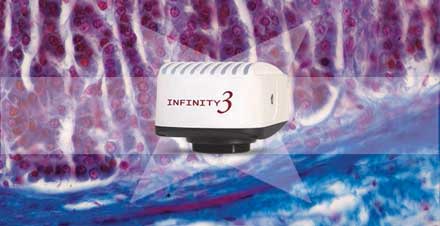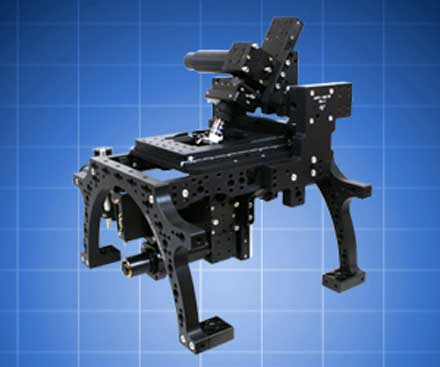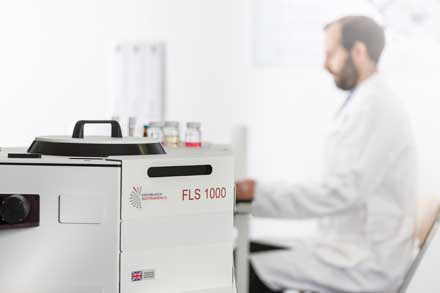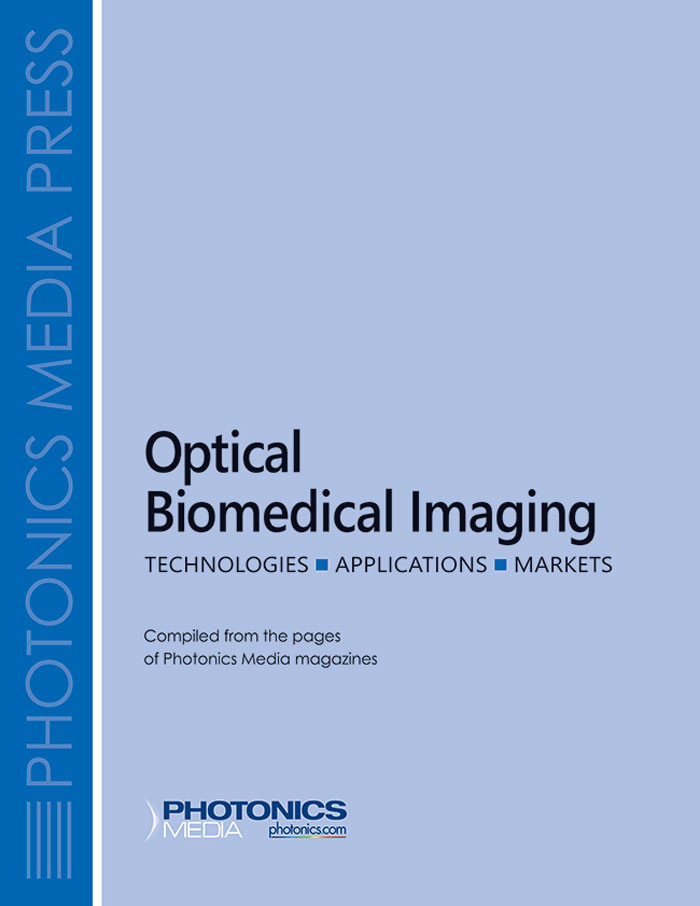|
Wednesday, November 22, 2017
|
|

|
|
|
Monthly newsletter focusing on how light-based technologies are being used in the life sciences. Includes news, features and product developments in lasers, imaging, optics, spectroscopy, microscopy, lighting and more. Manage your Photonics Media membership at Photonics.com/subscribe.
|
|
|
|
sponsor
|

|
|
Full-Spectrum Technology Deepens the Reach of Flow Cytometry
Revealing the full emission spectra of each fluorescent dye enables identification of larger numbers of cell samples from a single assay. Flow cytometry is gaining traction as a clinical and research tool in areas such as immuno-oncology and systems biology because it enables the ability to profile a large panel of heterogeneous cells from a single sample. These rapidly growing areas of research will drive the flow cytometry analyzer market to grow to more than $1 billion by 2020.
|
|
|
|
|
|
Fluorescent Sensor Detects Drug-Induced Protein Stress in Cells
A fluorescent sensor that will become activated in a cell when misfolded proteins in the cell begin to aggregate could be an effective way to detect drug-induced proteome stress prior to cell death. Researchers designed an unstable protein, called AgHalo, to sense proteome stress through the protein’s aggregation. The researchers used their sensor to test the level of protein stress caused by five commonly-used anti-cancer drugs. All five produced some level of protein stress detectable by the sensor before any cell death was observed.
|
|
|
|
|
|
 3D Imaging Aids Life Sciences
3D Imaging Aids Life Sciences
While human bodies and single cells are three-dimensional, imaging of them often was not. Data might be captured in two-dimensional slices during a computed tomography, magnetic resonance, ultrasound or even microscope study. But the interpretation of how those 2D images related to real-world medical and life science structures sometimes required specialized expertise. Now, advances in display-related technology and software are changing that, with benefits to medicine and the biosciences ranging from education to operation planning.
|
|
|
|
|
|
 Need a camera with sensitivity, speed and resolution?
Need a camera with sensitivity, speed and resolution?
Lumenera Corporation
The Lumenera INFINITY3-6UR is the ideal general purpose camera for most microscopy applications due to its 6MP resolution, excellent color reproduction, speed and light sensitivity needed for low-light applications. Built on Sony’s EXview HAD II sensor technology, this camera offers extremely high dynamic range, and very low noise.
Visit Website
Request Info
|
|
|
|
|
|
 Light Sheet Microscopy (oSPIM)
Light Sheet Microscopy (oSPIM)
Applied Scientific Instrumentation Inc.
ASI’s Oblique Single Illumination Microscope (oSPIM) is an excellent platform for high resolution light sheet microscopy for samples mounted in standard coverslip-bottom culture dishes. The oSPIM is a single-view light sheet system where the illumination light sheet is generated at an oblique angle using an oil immersion objective below the sample dish.
Visit Website
Request Info
|
|
|
|
|
 New Era in Photoluminescence Launched
New Era in Photoluminescence Launched
Edinburgh Instruments Ltd.
The FLS1000 is a state-of-the-art, modular photoluminescence spectrometer for the most demanding applications in Photophysics, Photochemistry, Material Sciences and Life Sciences. The instrument sets the standards in both steady-state and time-resolved spectroscopy.
Visit Website
Request Info
|
|
|
 Optical Biomedical Imaging
Optical Biomedical Imaging
Photonics Media
At last, a reference work has been compiled that offers in one place a broad survey of technologies, applications and markets for optical biomedical imaging, as only Photonics Media could produce it. This collection is a practical resource for those engaged in the research and development of relevant technologies.
Visit Website
Request Info
|
|
|
|
|
|
Scientists Fine-Tune Process for Making Thin Films from DNA
To further investigate the optical properties of a DNA-based lipid complex that is widely used in current DNA thin-film research, researchers developed a refinement process to minimize the relative bound water content and control binding of the surfactant onto the DNA backbone.
|
|
|
|
|
|
Researchers from the University of Rhode Island, Memorial Sloan Kettering Cancer Center and the Weill Cornell Graduate School of Medical Sciences have created an optical reporter via nanosensor, which is capable of detecting the progression of obesity-related diseases.
|
|
|
|
Hyperspectral imaging equipment developer Bodkin Design & Engineering LLC is collaborating with professor Sabra Botch-Jones at the Boston University School of Medicine to determine the effectiveness of the company’s small, portable hyperspectral imager for drug analysis in field settings.
|
|
|
|
PBM 101: Photobiomodulation Basics
Tue, Jan 9, 2018 1:00 PM - 2:00 PM EST
This webinar will provide a brief history of the use of light and color to diagnose and treat disease. It will review the science behind photobiomodulation (PBM) and present examples of 'real world' applications for this emerging technology. Presenter Robert S. Dotson, M.D., FAAO (board-certified, Ophthalmology) has been actively involved in researching and developing PBM technology for applications within ophthalmology for over 15 years. He is the founder of two companies focused on developing PBM applications, Photospectra and LumiThera.
|
|
|
|
Photonics Media is currently seeking technical feature articles on a variety of topics for publication in our magazine BioPhotonics. Please submit an informal 100-word abstract to Associate Managing Editor Marcia Stamell at [email protected] or use our online submission form www.photonics.com/submitfeature.aspx.
|
|
|
|